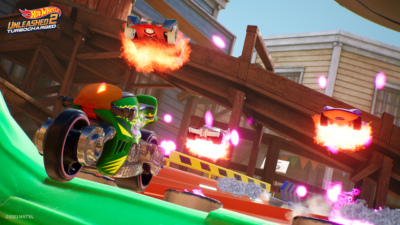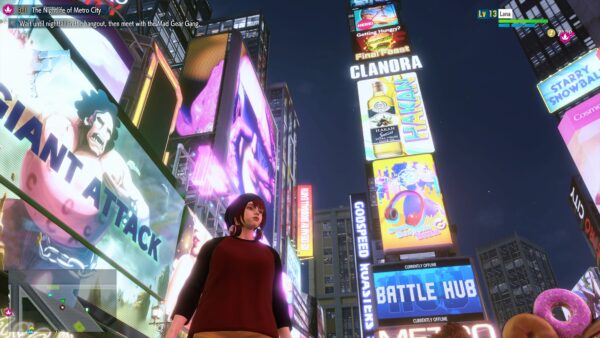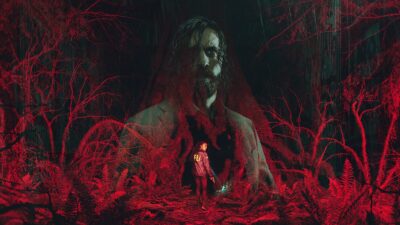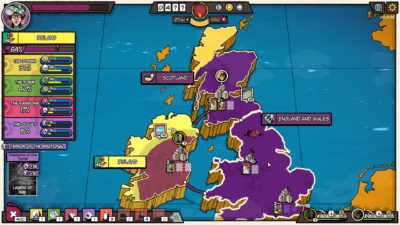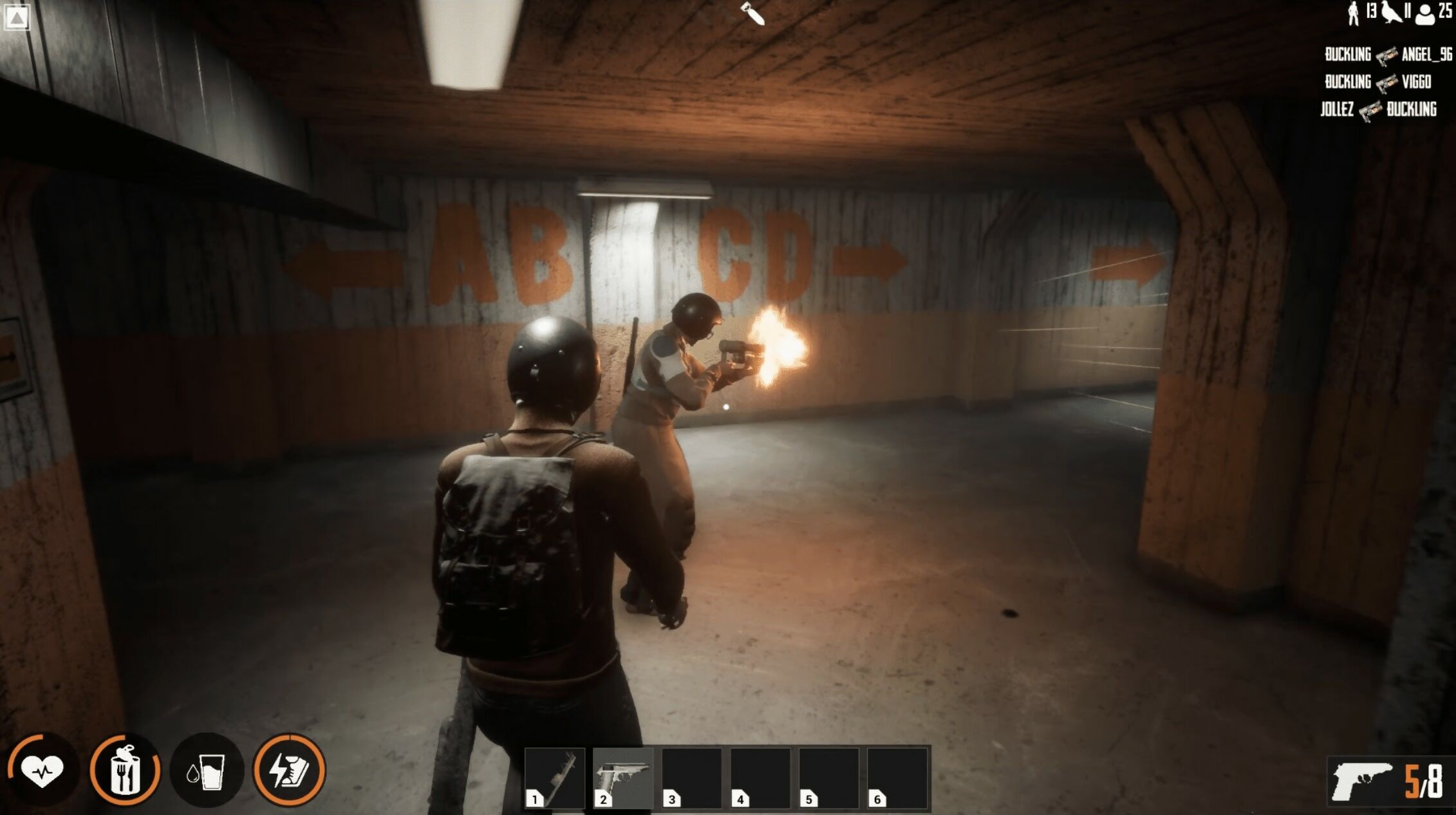
This multiplayer survival shooter looks like serious business at first. It’s 1970s Sweden, and outside the sprawling tenement building you call home, bombs are falling. With minutes before all-out war begins, your goal is to get to a bus that will take you to safety. The trouble is, everyone else is trying to escape, too, so with the clock ticking and limited space on the bus, you must gather what weapons and armour you can and fight or craft your way to safety.
There are signs everywhere that 5 Fortress’ opus isn’t taking itself all that seriously, though. First, there’s the pace: bouts currently last a brisk 20 minutes, which discourages players from endlessly camping out on rooftops with a sniper rifle or tinkering away at a crafting table. While Shattle isn’t a battle royale – the aim is to score points however you like rather than gun down every person you see – time is still of the essence, and the game’s designed specifically for short, fast-paced play sessions. “We always knew we wanted to create a survival game that doesn’t take an hour to play,” says studio co-founder Emil Sandberg. “It’s for pure survival gamers that don’t have the time anymore – maybe they’ve grown up and have a family, but they still want to play survival games.”

Then there are the pigeons. When you die in Shattle, you’re immediately reincarnated as a bird – the developer calls them doves, but they look more like pigeons to us – and they’re quite realistic pigeons, too. In your avian mode, you’re able to fly around the map, acting as a spotter for the remaining players you’ve sided with. And because there are up to 25 players in a Shattle bout, sessions can end with two dozen pigeons all flapping and strutting around, like a demented John Woo movie. “One of the things we like to do is create some sort of streamer-friendly content, so others can create and share lots of funny things with it,” Sandberg says. “It totally breaks the concept of disaster and bombings and everything, but in a fun way… before, you didn’t respawn during every bomb round – you just had one life. And from that we started to figure out, ‘OK, if you die, you have to go and search for another server’, which felt kind of lame. So that’s where the dove was born, to find a way for dead teammates to actually help those that are still alive, to spot things through doors or help them avoid where enemies are.”
Shattle’s Swedish setting makes sense, given it’s the home country of the developers behind it. But why such a specific era? “Most of us are from the northern part of Sweden,” Sandberg explains, “and Boden is an old military town… we’ve all grown up with it, since most of our parents or family members have some connection to the Swedish force. The gameplay’s based on a part of Sweden’s defence [strategy] where, if the bigger cities got bombed, [citizens] would escape to the small villages and towns around Sweden. From there they’d be rescued by bus. So that’s where [Shattle’s] story takes place: you missed the first bus and need to survive the bombing raids, and after that, a new bus will come through to get you out of there.”

What’s notable about 5 Fortress’ approach is how flexible it’s willing to be over Shattle’s design. The studio has a built-in ethos that it puts together an initial build over the course of six to eight weeks, then begins honing the concept based on player feedback. Those 20-minute bouts, for example, were initially pegged at a meatier one hour, before players commented that shorter bouts would make the game more intense. Similarly, the initial concept of having bombs tear up the landscape as bouts go on was originally more cosmetic, but is now being deepened based on player feedback. “We saw that the fighting gets much more hectic and stressful [with destruction], and you have more possibilities to actually hide, also,” says Sandberg. “So the destruction system is really necessary so we can put more dynamics in the game.”
There are just three developers behind Shattle, but Sandberg argues that having a small studio working on a multiplayer shooter has its advantages. “If everything goes well, we’ll be able to put all our efficiency into the development, and iterate based on the feedback we get from the community… so our ambition for the studio is a maximum of ten people.”
Indeed, Sandberg advises other indie studios to follow 5 Fortress’ approach: get your multiplayer game in front of its audience as quickly as you can. “I would like to say the big tip for everybody is to start to generate the community as early as possible to actually get honest feedback,” he says. “Get in the right direction at an early stage, because it’s much easier to change something early than when it’s starting to get done.”
Shattle is still in its relatively early stages and, again, there’s much that’s still being changed based on its community’s reactions – everything from the speed of equipping and loading guns to crafting to maps and non-player AI is still being worked on. Even that curious name could change in future (see box). Sandberg is confident that Shattle will be ready for Early Access in the first quarter of 2022, but again, the timing of that milestone will be based on player feedback. “We have a clear roadmap of what we want to develop,” he says. “But it’s up to when we see the pure data from players, then we’ll be ready for Early Access. Basically, none of our players should pay for a game they don’t feel is ready – so when everybody feels it’s ready, we’ll go for it.”


